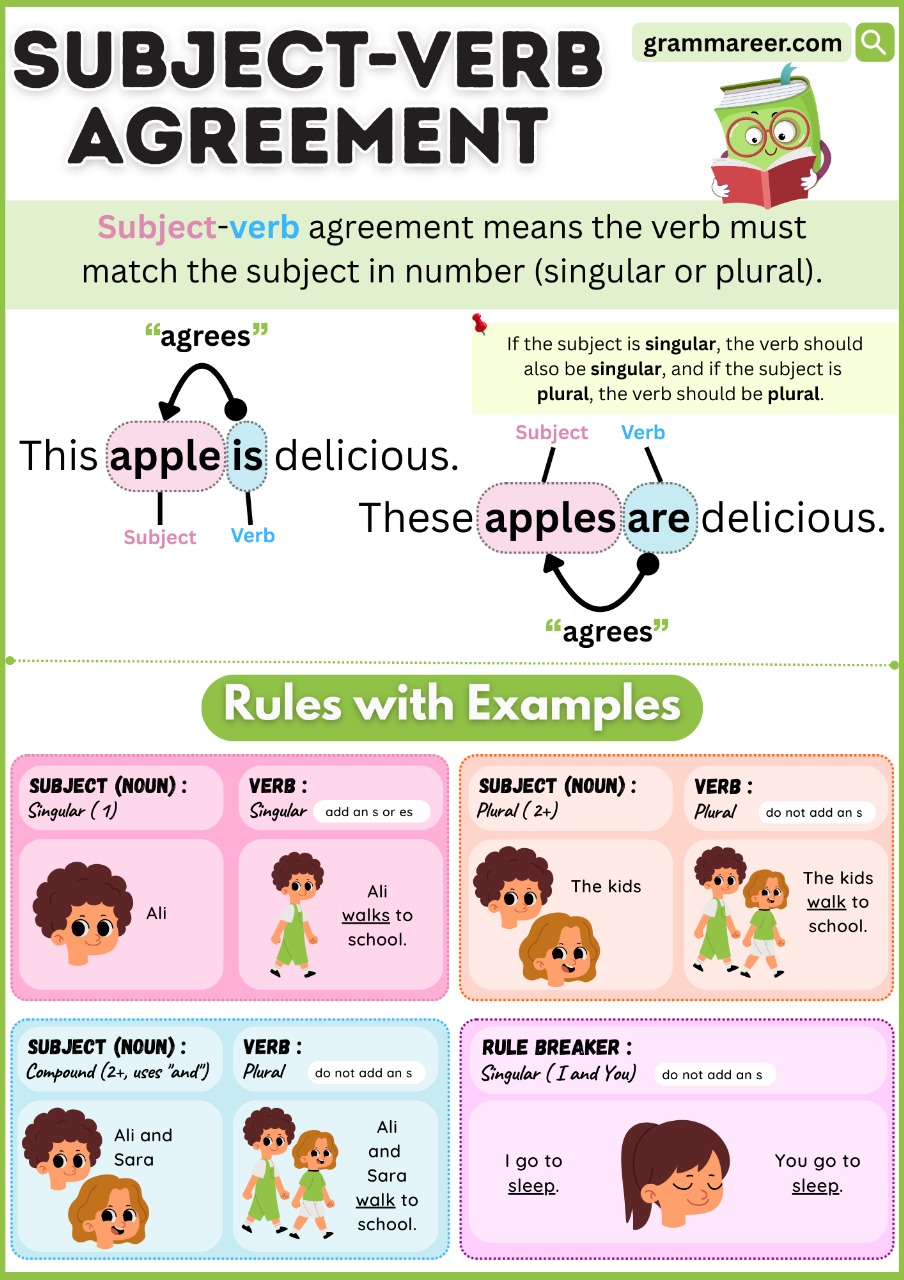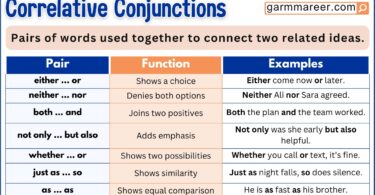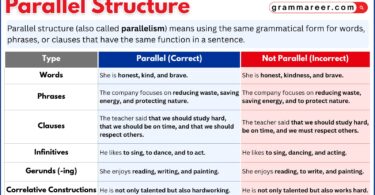Subject-verb agreement might sound like a complicated grammar term, but it’s really about one simple thing: making sure your subject and verb match each other in a sentence. When they don’t agree, the sentence feels awkward or even wrong. Understanding this rule is important because it keeps your writing clear, correct, and easy to read.
In this article, we’ll break down what subject-verb agreement means, why it matters, and the key rules you need to follow so you can use it with confidence.
Table of Contents
What Is Subject-Verb Agreement?
Subject-verb agreement simply means that the subject and the verb in a sentence need to match in number. A verb doesn’t just change to show time (tense); it can also change depending on whether the subject is singular or plural.
Take the verb run as an example. In the present tense, the verb changes slightly when the subject is singular—except when the subject is I or you. Look at the pattern below:
| Person | Singular Subjects | Plural Subjects |
| First Person: | I run. | We run. |
| Second Person: | You run. | You all run. |
| Third Person: | He runs. She runs. The boy runs. | They run. |
Definition of Subject-Verb Agreement
Subject-Verb Agreement is the rule in grammar that says the subject and the verb in a sentence must match in number.
Example:
- The dog runs fast.

Rules of Subject-Verb Agreement
Subject-verb agreement becomes especially important when we use present tense. In past or future tenses, the verb usually doesn’t change with the subject, so things are easier. But in the present, the subject and verb must “match” correctly. Learning these rules will help you write smooth, mistake-free sentences. Let’s walk through them one by one with examples.
Rule 1: Singular Goes with Singular, Plural Goes with Plural
This is the golden rule: a singular subject needs a singular verb, and a plural subject needs a plural verb. Subjects can be nouns, pronouns, or even noun phrases.
Example:
- The cat sleeps on the sofa.
- My friends travel every summer.
- He enjoys reading novels.
Rule 2: The Verb “Be” Is a Special Case
The verb be changes depending on both the number and the person of the subject. Check this quick chart:
| Person | Pronoun | Verb | Example |
| 1st singular | I | am | I am ready for the exam. |
| 1st plural | We | are | We are planning a trip. |
| 2nd singular/plural | You | are | You are very kind. |
| 3rd singular | He/She/It | is | He is late for class. / She is writing a letter. / It is raining outside. |
| 3rd plural | They | are | They are playing football. |
Other tenses:
- The baby was asleep.
- The players were practicing in the field.
Rule 3: “Has” vs “Have”
Singular subjects use has; plural subjects use have.
Examples:
- The student has a new notebook.
- The teachers have a meeting tomorrow.
- My friend has been waiting for me.
Rule 4: Subjects Joined by “And”
If two subjects are joined with and, use a plural verb.
Examples:
- Ali and Zahra are planning a trip.
- Apples and bananas make a healthy snack.
Rule 5: Subjects Joined by “Or”
If two nouns are joined by or, use a singular verb.
Examples:
- Tea or coffee is fine for me.
- Your brother or sister has to attend.
Rule 6: Indefinite Pronouns → Singular
Words like everyone, somebody, nothing are singular.
Examples:
- Everyone wants to join the party.
- Nobody knows the answer.
- Something feels wrong here.
Rule 7: “Either…Or” / “Neither…Nor”
The verb agrees with the subject closest to it.
Examples:
- Either the students or the teacher is late.
- Neither the book nor the pens are on the desk.
Rule 8: Nouns That Look Plural
Some nouns look plural but act differently.
Examples:
- The news is surprising.
- The police have caught the thief.
Rule 9: Negatives with “Do”
The verb do must agree with the subject.
Examples:
- The boys do not like spicy food.
- My mother does not drive.
Rule 10: Sentences Starting with “Here” or “There”
The subject comes after the verb.
Examples:
- Here is your pen.
- There are many books on the table.
Rule 11: Questions with “Do” or “Be”
The first verb must match the subject.
Examples:
- Does she play the guitar?
- Do they watch cartoons?
- Is he ready for the exam?
Rule 12: Abstract and Uncountable Nouns
These are always singular.
Examples:
- Water is essential for life.
- Honesty brings respect.
- Happiness makes life beautiful.
Rule 13: Wishes and Requests
Special cases where verbs take a different form.
Examples:
- I wish I were taller.
- If he were here, things would be better.
- We request that everyone be seated quickly.
Rule 14: Each / Every → Singular
Always take a singular verb.
Examples:
- Every house is painted white.
- Each student has a pen.
Rule 15: Phrases Like “All of,” “Some of”
The verb follows the noun that comes after.
Examples:
- All of the cake is gone.
- Some of the books are missing.
- A lot of people were waiting.
Rule 16: Time, Distance, and Money → Singular
Amounts are treated as singular.
Examples:
- Two kilometers is a short walk.
- Five dollars is not enough.
- Ten years is a long time.
Rule 17: Collective Nouns
Depending on meaning, they can be singular or plural.
Examples:
- My team is winning the match.
- The audience are clapping loudly.
How to Identify Subject-Verb Agreement?
The subject and the verb have to “get along.” If one is singular, the other should be singular. If one is plural, the other should follow along and be plural too.
To check if a sentence follows subject-verb agreement, look at these steps:
- Find the subject – Ask yourself who or what the sentence is about.
- Example: The boy plays football. (Subject = boy)
- Find the verb – Look for the action or state of being.
- Example: The boy plays football. (Verb = plays)
- Check the number – See if the subject is singular or plural.
- Singular subject → Singular verb (She runs)
- Plural subject → Plural verb (They run)
- Watch out for tricky cases – Some subjects may confuse you:
- Indefinite pronouns (everyone, nobody) → Singular
- Collective nouns (team, family) → Singular or plural, depending on meaning
- Words joined by and → Plural
- Words joined by or / nor → Verb agrees with the closest subject
Subject-Verb Agreement Examples
- The girl sings beautifully.
- (Singular subject → Singular verb)
- The boys play in the park.
- (Plural subject → Plural verb)
- My friend has a new car.
- (Singular subject → Singular verb)
- My friends have finished their homework.
- (Plural subject → Plural verb)
- The teacher and student are talking.
- (Two subjects with and → Plural verb)
- Either the cat or the dog is hungry.
- (Or → verb agrees with nearest subject)
- Neither the parents nor the child was ready.
- (Nor → verb agrees with nearest subject)
- Everyone likes a good story.
- (Indefinite pronoun → Singular verb)
- The police have arrested the thief.
- (Plural noun → Plural verb)
- The news is surprising.
- (Uncountable noun → Singular verb)
FAQs
Subject-verb agreement means the subject and verb in a sentence must match. If the subject is singular, the verb should be singular; if the subject is plural, the verb should be plural.
Because it makes sentences clear and correct. Without agreement, your sentence sounds awkward or wrong, like saying She play football instead of She plays football.
First, find the subject, then find the verb. Ask: do they “match” in number? If yes, the agreement is correct.
• Forgetting that words like everyone, nobody, someone are singular.
• Getting confused with either…or and neither…nor.
• Treating collective nouns (like team, family) incorrectly.
• Forgetting to add “s” for third person singular verbs in the present tense.
Final Thoughts
As we learned, subject-verb agreement is all about keeping the subject and the verb in harmony. When they match, your sentences flow smoothly and sound correct. At first, the rules might feel a little tricky, especially with words like everyone, neither…nor, or collective nouns, but with practice, they’ll start to feel natural. The key is to always check: does the subject agree with the verb? If yes, you’ve nailed it.
You May Also Like




